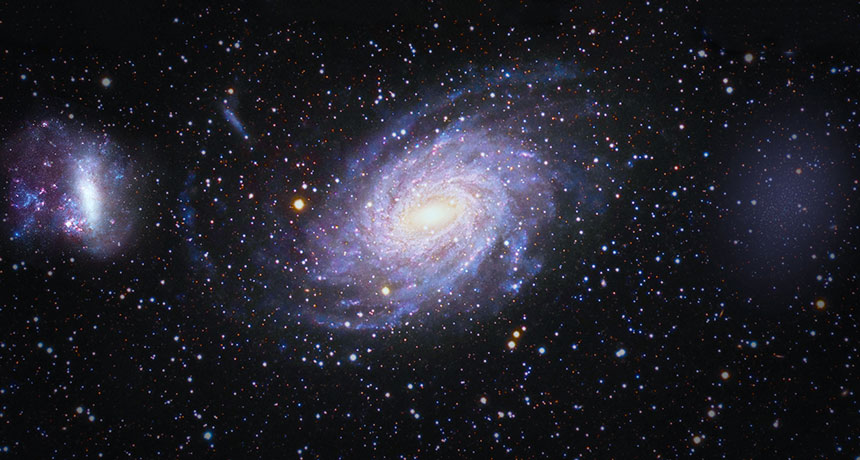arXiv A website that posts research papers — often before they are formally published — in the fields of physics, mathematics, computer science, quantitative biology, quantitative finance and statistics. Anyone can read a posted paper at no charge.
astronomy The area of science that deals with celestial objects, space and the physical universe. People who work in this field are called astronomers.
astrophysics An area of astronomy that deals with understanding the physical nature of stars and other objects in space. People who work in this field are known as astrophysicists.
colleague Someone who works with another; a co-worker or team member.
data Facts and/or statistics collected together for analysis but not necessarily organized in a way that gives them meaning. For digital information (the type stored by computers), those data typically are numbers stored in a binary code, portrayed as strings of zeros and ones.
galaxy A massive group of stars bound together by gravity. Galaxies, which each typically include between 10 million and 100 trillion stars, also include clouds of gas, dust and the remnants of exploded stars.
mass A number that shows how much an object resists speeding up and slowing down — basically a measure of how much matter that object is made from.
Milky Way The galaxy in which Earth’s solar system resides.
orbit The curved path of a celestial object or spacecraft around a star, planet or moon. One complete circuit around a celestial body.
remnant Something that is leftover — from another piece of something, from another time or even some features from an earlier species.
star The basic building block from which galaxies are made. Stars develop when gravity compacts clouds of gas. When they become dense enough to sustain nuclear-fusion reactions, stars will emit light and sometimes other forms of electromagnetic radiation. The sun is our closest star.
technology The application of scientific knowledge for practical purposes, especially in industry — or the devices, processes and systems that result from those efforts.
telescope Usually a light-collecting instrument that makes distant objects appear nearer through the use of lenses or a combination of curved mirrors and lenses. Some, however, collect radio emissions (energy from a different portion of the electromagnetic spectrum) through a network of antennas.








